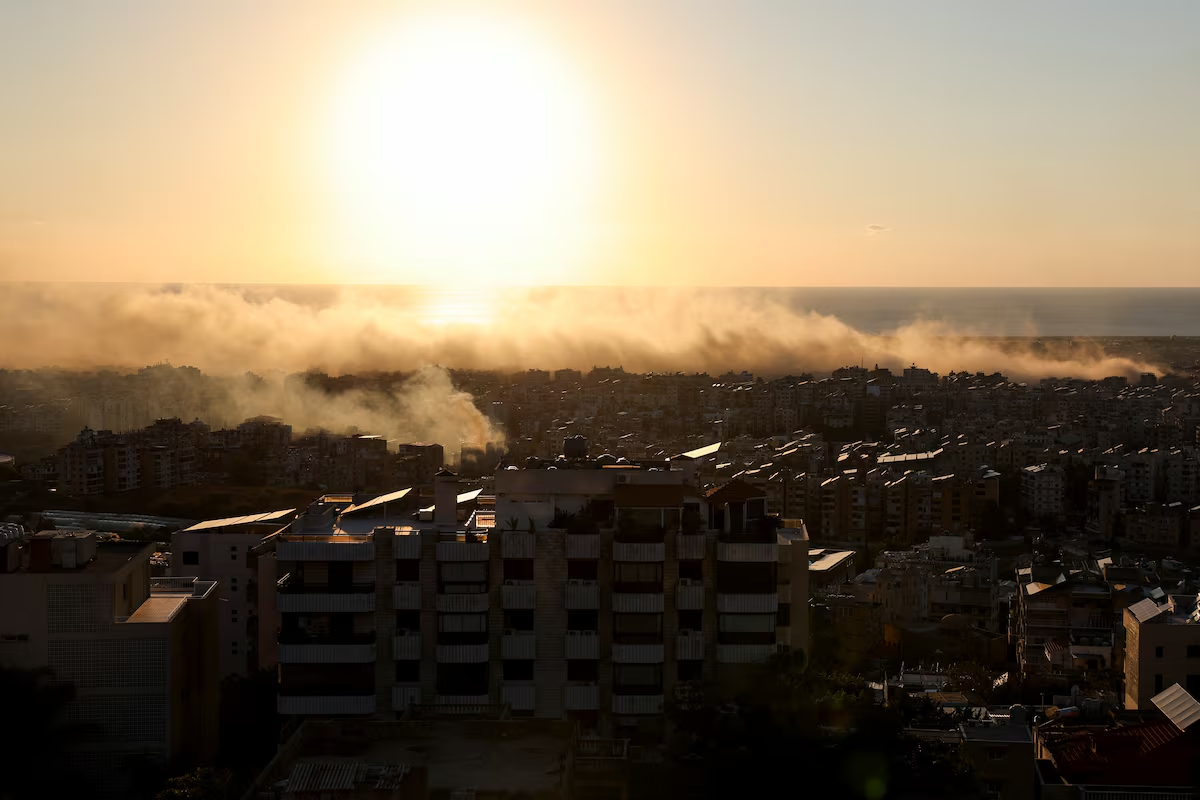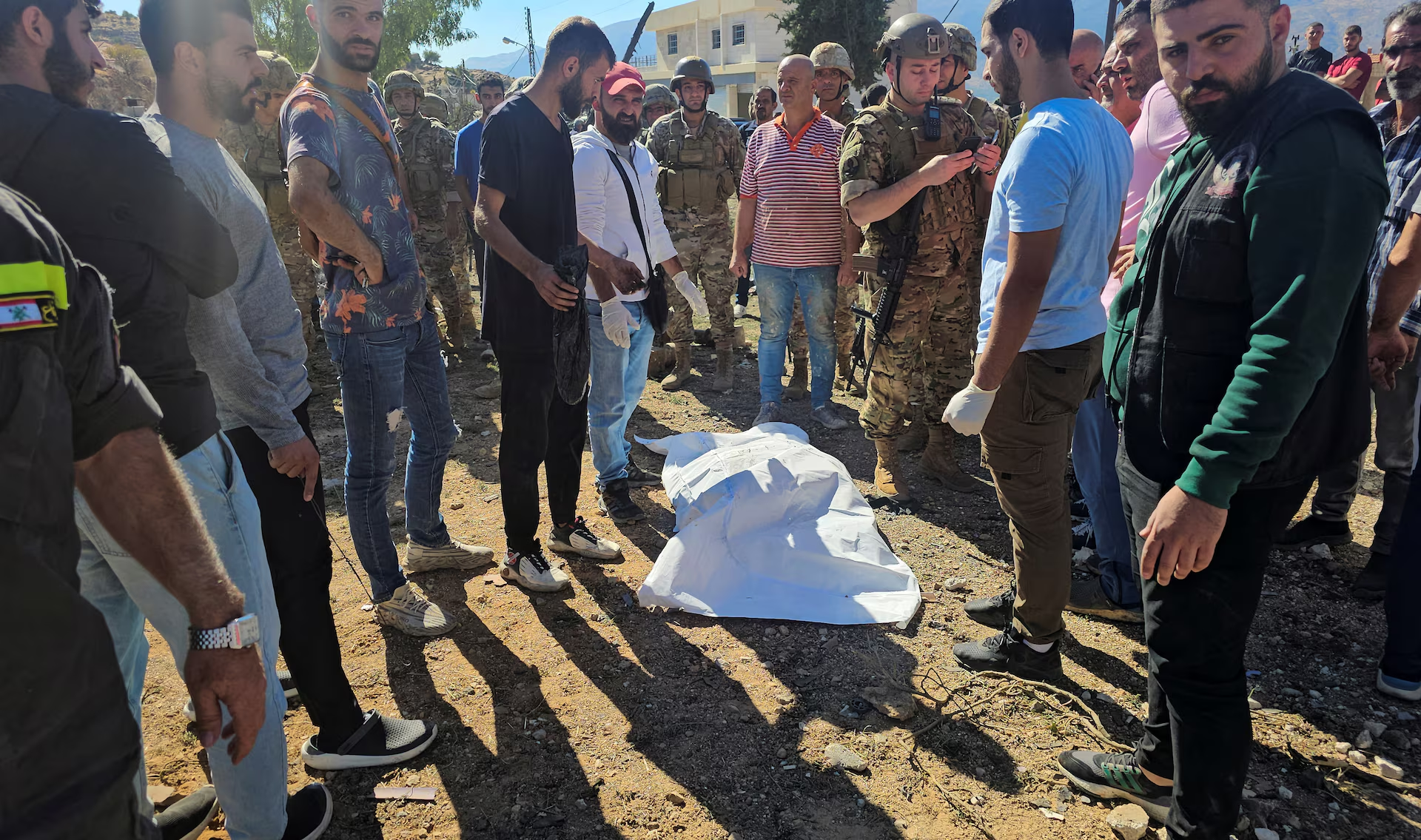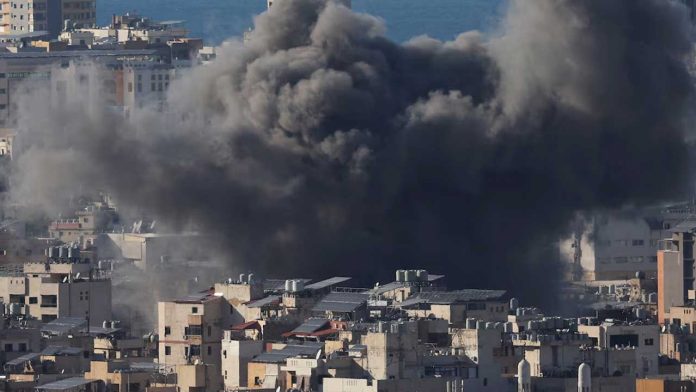On Saturday, Israel launched airstrikes targeting Hezbollah arms facilities in southern Beirut in response to rocket fire from the Lebanese militant group, which also reportedly launched a drone towards Prime Minister Benjamin Netanyahu’s holiday residence. Fortunately for Netanyahu, he was not present at the time of the alleged drone strike, and initial reports did not confirm any direct damage to the building. Netanyahu condemned the incident as an assassination attempt orchestrated by Hezbollah, which he described as “Iran’s proxy,” warning that it was a “grave mistake” as Israel gears up for retaliation against recent Iranian missile attacks.

The renewed violence comes amid a backdrop of ongoing conflict in Gaza, where Israeli bombardments have resulted in over 100 fatalities in the coastal enclave. Medics and Hamas media reported that a tightening siege around three hospitals exacerbates the humanitarian crisis. The deaths of Hamas leader Yahya Sinwar earlier this week had briefly raised hopes for a potential truce in both Gaza and Lebanon, but statements from both Israel and its adversaries suggest that the fighting will continue unabated.
In a show of force, Israeli aircraft dropped leaflets over southern Gaza featuring a picture of Sinwar and the message: “Hamas will no longer rule Gaza.” This communication underscores Israel’s determination to eradicate Hamas’s influence in the region, as military operations intensify in the lead-up to the November 5 elections in the U.S. Israel aims to consolidate its borders and prevent its adversaries from regrouping during this critical time.
In northern Gaza, a series of airstrikes targeted a multi-floor building in Beit Lahiya, reportedly killing at least 73 individuals and injuring many others. Although Israeli officials are investigating these casualty figures, initial assessments suggested they may have been exaggerated. Meanwhile, the strikes in Beirut produced thick plumes of smoke as they hit several locations associated with Hezbollah, targeting both weapons storage facilities and an intelligence command center.

Israel had previously issued evacuation orders for multiple neighborhoods within southern Beirut, urging residents to distance themselves from potential military targets. Despite these warnings, airstrikes continued in other areas, leading to the mass exodus of tens of thousands from the southern suburbs, which were once densely populated and housed Hezbollah’s offices and underground facilities.
In a separate incident, Israeli forces killed two people traveling on Lebanon’s main highway near the town of Jounieh and claimed responsibility for another strike that resulted in at least four deaths in the Bekaa Valley, including a mayor. The escalating hostilities have resulted in casualties on both sides, with one Israeli killed and several others injured due to Hezbollah rocket attacks.

Despite the dramatic rise in violence, Hezbollah has yet to respond to allegations concerning the drone strike aimed at Netanyahu’s residence. The conflict has escalated to direct confrontations between Iran and Israel, including missile attacks on Israeli territory in April and October. Netanyahu has vowed to retaliate against those who threaten Israeli citizens, sending a stark warning to Iran and its affiliates.
Tensions in the region have reached a boiling point, with the Israeli military confirming its ongoing operations against Hezbollah. Nearly three weeks ago, Israeli forces conducted a ground assault in southern Lebanon aimed at stabilizing the border, leading to significant military action, including the destruction of tunnel networks linked to Hezbollah.
According to Lebanon’s health ministry, over 2,400 people have been killed in Lebanon since October 2023, with the majority of casualties occurring in the past month. In contrast, Israeli authorities report 59 deaths in northern Israel and the occupied Golan Heights due to the conflict. The initial attack that sparked the current war was orchestrated by Hamas-led militants, resulting in approximately 1,200 deaths and 250 hostages taken.

As the humanitarian crisis deepens, the Israeli offensive has displaced a significant portion of Gaza’s 2.3 million residents, leading to widespread hunger and devastation of critical infrastructure, including hospitals and schools. Amid international pressure, COGAT, the Israeli military agency overseeing operations in the Palestinian Territories, has increased the flow of aid into Gaza. Additionally, Israel and the United Arab Emirates collaborated on an air drop of humanitarian aid over southern Gaza.
Western leaders, including U.S. President Joe Biden, have suggested that Sinwar’s death may open up opportunities for a truce in Gaza and facilitate the release of hostages. However, negotiations for such a ceasefire have remained stalled for weeks. U.S. Secretary of State Antony Blinken is expected to visit Israel as part of ongoing diplomatic efforts aimed at de-escalating tensions in the region. As the situation continues to evolve, the potential for further military actions remains high, with both sides preparing for an extended conflict.




